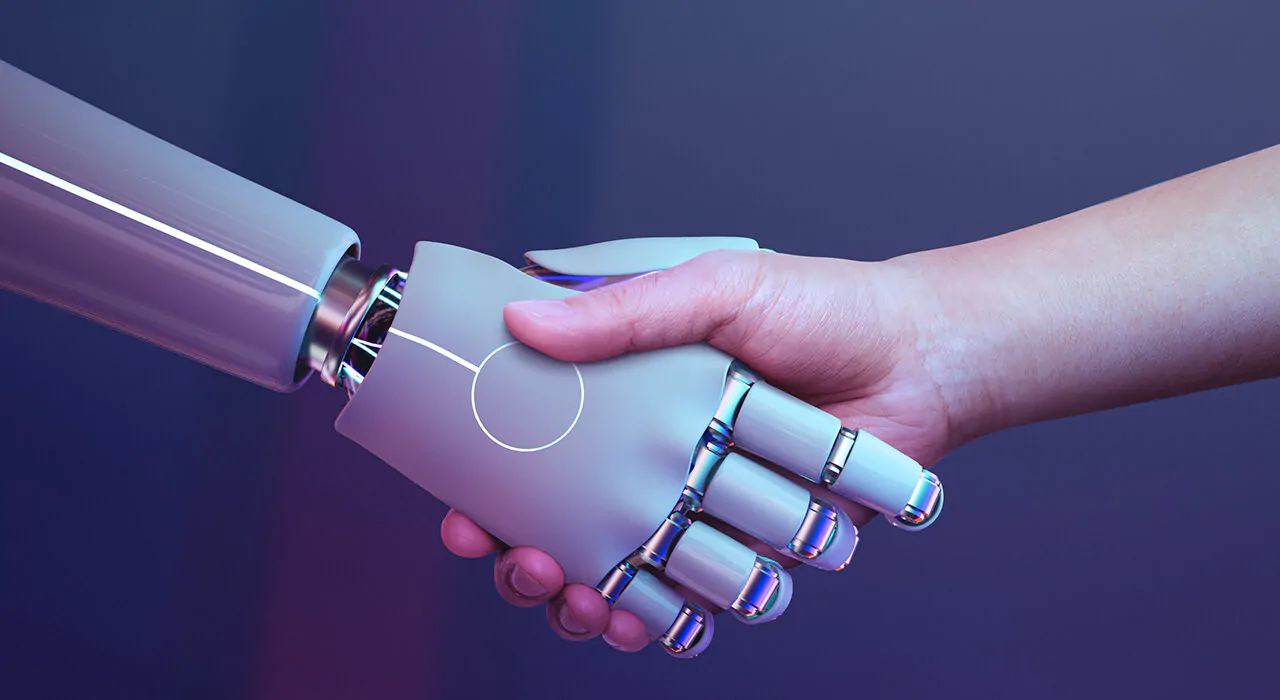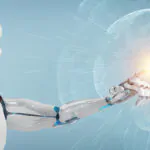What comes to your mind when you hear the word “robot”? Maybe be an alien-like structure or any human-looked device in a spaceship? Perhaps you envision a dystopian future where humanity is subjugated by its robot overlords. Or, on the other hand, maybe you consider an automobile sequential construction system with robot-like machines assembling vehicles. But will robots take over the world one day?
What are Robots?
Nowadays, most people are aware of the concept of robots but fail to frame a proper definition. First, the word robot is derived from the Czech word robota, meaning forced labour. Robots and machines are two different things. Robots are made to communicate or interact with the world interestingly. Robots know how to work in their surroundings and respond to the needful.
Well, if you’re looking for a detailed definition, here it is. Robots are interactive, responsible, cognitive machines or physical tools that can perceive the environment using sensors, reason about events, make plans using algorithms implemented in computer programs, and perform actions enabled by actuators.
Now the question arises: What is robotics? Explained in detail below!
What is Robotics?
Robotics Engineering is the perfect blend of hardware, software, innovation, and advanced technologies. Robotics is a technology-based process of making superior robots. All the process of functioning a robot focuses on the basic plan, development, activity, and utilization of robots in a large group of various settings. Generally, the field of robotics fixates on making robots to perform straightforward or tedious errands at scale or to work under challenging circumstances where people would some way or another, not be able to work. In any case, late advancements in AI and artificial reasoning imply that we might see an expansion in human-to-robot connections later.
Types of Robots
Well, the concept of robots has existed for many years, but the advancement of robots started a few decades ago. They are developed in such a way that they can work or do the job of a human being. There are now thousands of applications in one robot. Here are some of the sectors in which a robot can be used:
- Industrial: The most common use of robots is in the industrial sector. For example, tasks like assembly line processes, picking and packing, welding, and similar functions can easily be done by robots with 100% accuracy and systematic accuracy.
- Military: Military officers or forces use robots in areas such as UAVs (Unmanned Aerial Vehicle), UGVs (Unmanned Ground Vehicle), triage, and surveillance.
- Service: Robots are also widely used in the service sector for manual tasks like dispensing food and cleaning.
- Exploration: There are thousands of places that are still now not approachable by human beings. In such cases, robots are used to visit unexplored places.
- Medical Requirement: The concept of using robots in the medical field mainly emerged during COVID-19 times. Robots are used to transfer food and medicines to COVID-19 patients to safeguard medical crew members.
Advantages and Disadvantages of Robots
The field of robotics offers answers to various problems. As we’ll see, the eventual fate of robots could impact the world we live in. Nonetheless, that doesn’t mean there aren’t disadvantages to the innovation.
As investigated on our open step from the University of Reading, there are different upsides and downsides to involving robots in our cutting-edge world:
Advantages of robots
- They can offer expanded efficiency, effectiveness, quality, and consistency in specific settings.
- Not at all like people, robots don’t get exhausted.
- Until they break down, they can rehash a similar interaction constantly.
- They can be exceptionally exact, even to parts of an inch, making them especially valuable in assembling microelectronics.
- Robots can work in conditions that are hazardous for people, for example, with perilous synthetic substances or in areas of high radiation.
- They don’t have physical or natural necessities; similarly, people do.
- A few robots have sensors and actuators, which are more able than people.
Disadvantages of robots
- In certain enterprises, robots are supplanting human positions, which can cause financial problems.
- In general, robots can do everything they are said to do, meaning they can’t make do (even though AI and AI are evolving this).
- Current robotics innovation implies that most machines are less apt than people and can’t contend with a human’s capacity to comprehend what they can see, even though specialists are creating robots that can more likely sense the world.
- Robots with practical applications are, for the most part, costly regarding the underlying expense, upkeep, and the requirement for additional details, and they should be customized to do the errand.
Robotics in our Daily Lives
Anything that you think, one thing is sure: robots are setting down deep roots. Luckily, it appears reasonable that robots will be more about doing repetitive or dangerous undertakings than holding onto incomparable executive power. We should see robotics, characterizing and ordering the term, sorting out the job of Artificial Intelligence in the field, the future of robotics, and how robotics will completely change us.
It’s not difficult to get an impression of how robots change our regular routines: essentially, consider yourself serving a siphon next time you stop for gas. Such advancement was difficult to envision when gas stations started. Presently, even occupants in rural areas in the U.S. approach such robots. That is just one illustration of what artificial intelligence means for how we live. But “Will robots take over the world one day?”
Top tech companies are in an ongoing competition to impact how robotics are carried out in individuals’ daily lives – which will lead us to a genuinely exciting future.
How about we make some forecasts, shall we? Everyone has only one question “Will robots take over the world one day?”.
10 Ways How Robotics Could Take Over the World
“Will robots take over the world one day?” Here are ten ways in which robotics can take over the world.
- Robotics in public security: Technology robotics and Artificial technology for predicting future severe crimes might seem complicated, yet it’s feasible for the future we’re checking out. Drone footage, for instance, will make that happen soon. In addition, automatic acknowledgement of suspicious activities is already a reality for camera-based security systems. This technology will vitally change society: it will allow law enforcement officials to act rapidly at whatever point a suspicious behaviour has been spotted.
- Robots in education: The line between classrooms and individual learning settings is already starting to obscure. Robots will help the course of personalized learning. NAO, the humanoid robot, is already forming bonds with students worldwide. It accompanies important feelings of natural interaction, including moving, listening, speaking, and associating.
- Robots at home: Cloud-connected home robots are already becoming part of our lives. We can set up the vacuum cleaner to do the task for us, and we can plan a warm home-cooked meal to be ready when we’re finished with work. Multi-function robotic cookers can sear, steam, bake, slow cook, and perform any other action without our mediation. We just set them up. These cloud-connected robots are probably going to develop into further developed forms. We hope to see discourse understanding and increased interactions with humans in the upcoming years. These improvements may change the look and feel of our homes!
- Robots as coworkers: Technology robotics and Artificial technology will have a significant impact on the workplace of the future. They’ll become capable of taking on multiple jobs in an organization, so it’s the ideal opportunity for us to start pondering how we interact with our new collaborators. The machines will probably develop more concerning voice acknowledgement, so we’ll speak with them through voice commands.
- Robots might take our jobs: Regardless of whether we like it, robots have already replaced many individuals in their positions. Office administration, logistics, and transport positions are also at risk of being replaced. Recall autonomous vehicles? Indeed, we could see them as large trucks on the roads in the future. Ball State University’s concentration anticipated that many occupations risk being automated, including insurance financiers, telemarketers, and tax-bring preparers back. More precisely, robots should take over half of all low-gifted positions.
- They create jobs, too: “Robots will take our jobs!” is perhaps the most common fear surrounding robotics development. Indeed, technology is changing fast, and it has monetary ramifications. Driverless cars, for instance, are almost sure to replace cab drivers in the future. Shortly, artificial intelligence will, likely, replace tasks, not positions. Fortunately, it will also create new markets and occupations. We could require additional education and, yet again, training for those positions. However, the fantastic open doors will be there.
- Autonomous cars: Self-driving cars require human intercession, yet we’re drawing nearer to the day when they will not. In the past decade, the impression of this technology among general society went from “How could it be even conceivable?” to “Maybe it’s possible…” to “Most certainly arriving!” Waymo, the company that arose from oneself self-driving car project by Google, no longer has an imposing business model in this industry. Instead, each significant automobile maker is seeking this technology, with Uber being perhaps the most grounded player. The users of this help can now be matched with a self-driving Uber when they demand assistance to take a brief look at the future. Where will this pattern take us? As companies keep putting resources into this pattern, we’ll live to see an alternate face of public transport by 2020.
- Healthcare robots: We’re also investigating an alternate future for healthcare using Technology robotics and Artificial technology. Instead of visiting a primary care physician who will surrender us a check with a straightforward stethoscope, we’ll have insightful robots performing these tasks. They will interact with patients, mind their circumstances, and evaluate the requirement for additional appointments. Pharmabotics will bring more tremendous changes. They’ll be like ATMs for prescriptions, so we can get the medications we want while avoiding the bother of talking to a stranger about our health issues.
- Robotics for entertainment: Robots are getting more personalized, interactive, and engaging. With the development of this industry, virtual reality will enter our homes shortly. We’ll have the option to interact with our home entertainment systems through conversations, and they will answer our attempts to communicate.
- Robots will boost our standard of living: We’ve seen this from the beginning of time: automation and mechanization help the overall standard of living. We’ve seen it with the Industrial Revolution, and it will happen again. According to estimates from the United Nations, neediness has decreased to a greater degree throughout recent decades than in the previous 50. That’s because the global economy became sevenfold, and technology played a colossal part there. However, the future of robotics types of robotics intelligence is not yet secured.
Now the question arises: “Will robots take over the world one day?”
The Future of Robotics: Will Robots Take Over The World?
Robots surround us, whether the mechanized machines gather our vehicles or the remote helpers that utilize conversational points of interaction to help us around the house. However, as we’ve seen, they’re not appropriate for all everyday issues right now. In any case, will that adjustment represent things to come? Notwithstanding fears of an AI takeover, where machines supplant people as the predominant knowledge in the world, such a situation appears to be far-fetched. In any case, business network PwC predicts that up to 30% of occupations could be mechanized by robots by the mid-2030s. Different reports recommend that the supply of robots worldwide could arrive at 20 million by 2030, with robotized labourers taking up to 51 million positions in the following ten years. Thus, while they may not assume control over the world, we hope to see more robots in our daily routines.
How Robots Will Change the World
As per a report, robotization and machines will see a change in our work. They anticipate that across Europe, labourers might require various abilities to look for employment. Their model shows that exercises that need, for the most part, physical and manual skills will decline by 18% by 2030, while those requiring essential mental abilities will reduce by 28%. Labourers will require mechanical abilities, and there will be a significantly more prominent requirement for those with STEM skills. Likewise, numerous jobs will require socioemotional abilities, especially in jobs where robots aren’t great substitutes, for example, providing care and education. We may likewise consider robots to be an essential piece of our day-to-day daily practice. In our homes, numerous basic errands, for example, cooking and cleaning, might be wholly robotized.
Additionally, with robots that can utilize PC vision and normal language handling, we might see machines that can cooperate with the world more, like self-driving vehicles and computerized partners. Robotics may likewise shape the fate of medication. Careful robots can perform exact activities and, with propels in AI, could ultimately complete medical procedures freely. The capacity for machines and robots to learn could provide them with a considerably more varied scope of uses. Future robots that can adjust to their environmental elements, ace new cycles, and change their way of behaving would be fit for additional intricate and dynamic undertakings.
At last, robots can improve our lives. As well as bearing the weight of genuinely requesting or tedious errands, they might have the option to develop medical care further, make transport more productive, and give us more opportunities to seek innovative undertakings. Even though humanoid robots remain, for the most part, in the domain of sci-fi, mechanical machines are surrounding us. These accomplishments of designing now assist us with numerous everyday issues and could change the future for us. Notwithstanding different benefits and hindrances, one thing’s without a doubt; those with abilities in robotics will be exceptionally pursued from here on out. Whether making, programming, or keeping up with robots, there will probably forever be work in the field of robotics.
Conclusion
The question “Will robots take over the world one day?” doesn’t have a clear answer till now. Robots could someday be our drivers, companions, collaborators, teachers, specialists, and exploration pioneers. The capabilities of this technology will develop as scientists and specialists proceed to innovate and advance robotics. Robots are already a central part of everyday life in many capacities. They will probably work on the quality of life for billions of individuals and even assist us with reaching new skylines on our planet. Contact Monarch Innovation for more details and information.





